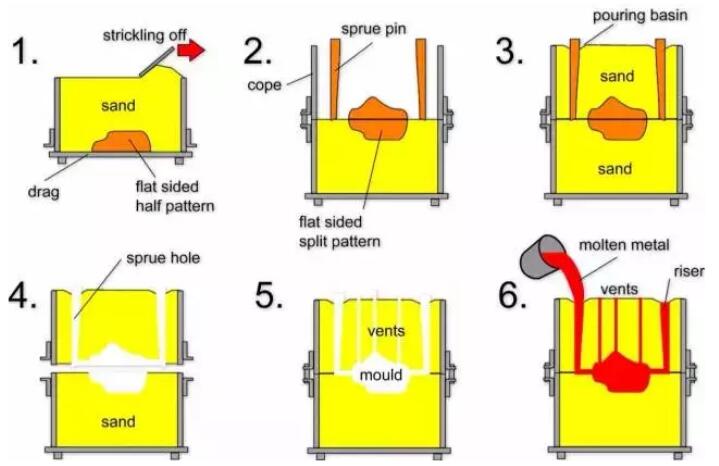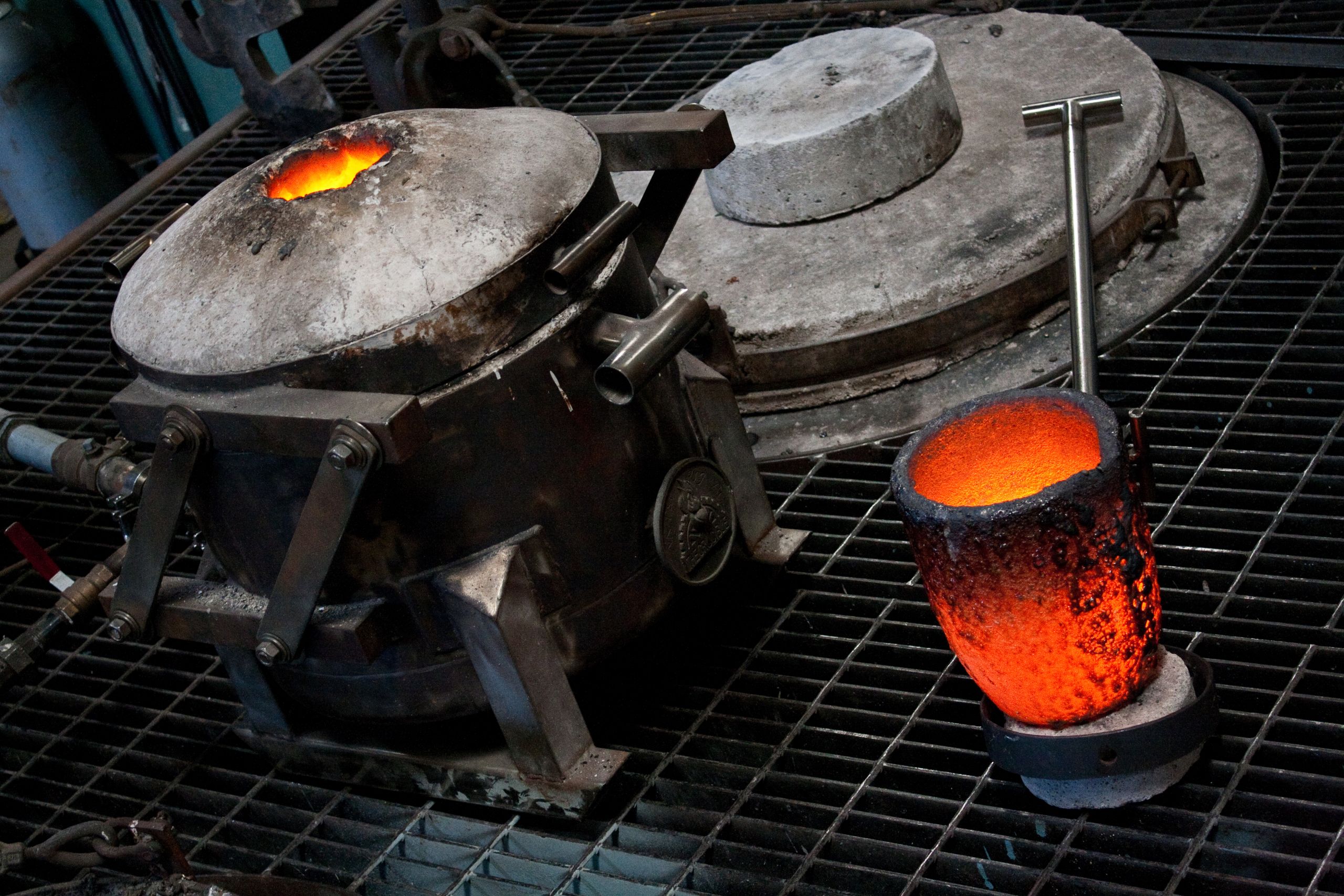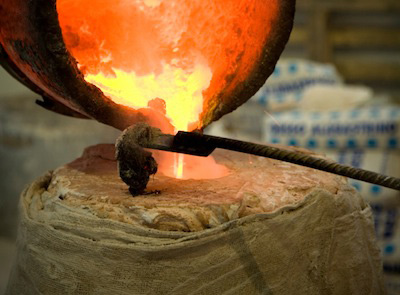Comprehending the Metal Castings Process: A Comprehensive Overview for Beginners
The Metal Casting procedure is a basic strategy in producing that transforms molten steel right into strong types. Novices must realize the numerous techniques included, such as sand spreading and die casting. Comprehending the products, style principles, and precaution is similarly essential. Each facet plays an essential duty in attaining successful outcomes. As one browses these ins and outs, the inquiry of how to enhance each action for boosted outcomes ends up being progressively relevant.
The Fundamentals of Metal Casting
Metal Casting has advanced over centuries, its fundamental principles remain constant and important to the manufacturing procedure. At its core, Metal Casting involves the improvement of molten steel right into solid objects via various methods. The procedure begins with the production of a mold, which defines the shape of the end product. Once the mold is prepared, steel is warmed to its melting factor and poured into the dental caries. After cooling, the metal solidifies, taking the shape of the mold and mildew.
There are a number of casting methods, including sand casting, investment spreading, and pass away spreading, each with special advantages and applications. The choice of method relies on factors such as production quantity, product type, and wanted accuracy. Once cast, the final product may undergo extra processes like machining or surface treatment to attain the called for finish and specifications. Understanding these fundamentals is necessary for any individual interested in the field of Metal Casting.

Understanding Products Made Use Of in Steel Casting
Materials play a necessary duty in the Metal Casting process, affecting the final product's residential properties and efficiency. Various steels are utilized, consisting of aluminum, bronze, steel, and iron, each offering distinctive qualities suited for certain applications. Aluminum is lightweight and corrosion-resistant, making it optimal for auto parts. Iron, especially cast iron, is favored for its outstanding wear resistance and toughness. Steel provides high stamina and versatility, commonly made use of in heavy equipment parts. Bronze, understood for its corrosion resistance and machinability, is generally utilized in marine applications.
In addition to the metals, numerous casting materials, such as sand, plaster, and ceramic, are used to create molds. Sand casting, the most widespread method, utilizes silica sand due to its thermal security and ability to create detailed shapes. Plaster and ceramic molds provide better information but may require more complicated processes. The selection of products straight affects the effectiveness, expense, and high quality of the casting operation.
The Design Refine: From Principle to Blueprint
The style process in Metal Casting begins with the preliminary idea development, where ideas are generated and evaluated. This is followed by the application of CAD modeling methods, enabling specific visualizations of the style. The blueprint completion actions guarantee that all specifications are accurately recorded for production.
First Principle Advancement
Initial idea advancement marks an essential stage in the Metal Casting process, where concepts transform into tangible designs. Throughout this stage, designers collaborate with stakeholders and designers to brainstorm and refine first concepts. They take into consideration elements such as functionality, aesthetic appeals, and manufacturability, guaranteeing that the layout satisfies the required specs and performance standards. Illustrations and outlines are produced to visualize the principles, enabling preliminary analyses of feasibility and cost-effectiveness. This stage also entails recognizing products and potential casting approaches that align with the design goals. Inevitably, initial concept advancement lays the groundwork for an extensive plan, directing the succeeding phases of the spreading process and making certain a successful shift from concept to truth.
CAD Modeling Techniques
Changing principles into exact layouts, CAD modeling techniques play an essential duty in the Metal Casting process. These strategies utilize sophisticated software application to produce in-depth three-dimensional designs that precisely reflect the designated item. By employing devices such as parametric modeling, solid modeling, and surface modeling, designers can control dimensions and shapes easily. CAD systems additionally facilitate simulation and evaluation, enabling the identification of potential flaws before manufacturing starts. This aggressive strategy decreases material waste and enhances the design for manufacturability. Additionally, CAD models can be easily modified, making it possible for quick versions based upon responses. Basically, CAD modeling acts as the foundation of the style procedure, linking the gap between first ideas and the ultimate production-ready layouts.
Plan Finalization Tips
Adhering to the production of thorough CAD versions, the next phase entails plan finalization, which is critical in equating digital designs into actionable prepare for production. This process starts with reviewing the CAD designs for accuracy and compliance with specs. When confirmed, the dimensions, tolerances, and material specifications are meticulously detailed to assure quality. Incorporating notes and notes helps connect crucial information regarding casting processes, surface area finishes, and setting up needs. The settled plan undergoes a rigorous approval process, typically involving partnership with designers and production groups to deal with any kind of potential problems. After all modifications are made and approvals gotten, the blueprint is formally launched, acting as the fundamental document for the subsequent phases of Metal Casting, including pattern making and mold layout.
The Metal Casting Strategies Described

Metal Casting strategies incorporate a selection of techniques used to form liquified metal into desired forms. These techniques vary according to the sort of product, complexity of the layout, and manufacturing volume. Sand casting is one of one of the most usual methods, entailing the creation of a mold from sand to hold the molten metal. Financial investment casting, or lost-wax casting, enables detailed styles by utilizing a wax pattern that is disappeared. Pass away casting utilizes high-pressure injection of molten steel right into a mold and mildew, ideal for mass production. Various other methods consist of irreversible mold and mildew casting, which utilizes multiple-use molds, and centrifugal casting, where rotational forces assist in loading the mold and mildew. Each strategy has its applications and advantages, making it crucial for makers to choose the appropriate technique based on their specific demands and demands. Understanding these techniques is crucial for anybody entailed in the Metal Casting process.
Completing Procedures: Enhancing Your Casted Product

Completing processes play a vital function in improving the top quality and appearance of casted items. Different surface area therapy strategies, such as sprucing up and finish, are utilized to improve resilience and looks. Furthermore, quality evaluation techniques ensure that the end product satisfies defined standards and performance demands.
Surface Treatment Techniques
A variety of surface therapy strategies play an important role in boosting the high quality and longevity of casted products. These strategies include techniques such as shot blasting, brightening, and covering. Shot blasting efficiently eliminates surface flaws, improving the visual and useful characteristics of the spreading. Polishing offers a smooth finish, which is specifically crucial for attractive applications and elements requiring very little rubbing. Coating methods, such as electroplating or powder covering, offer additional security versus deterioration and wear, guaranteeing resilience. Additionally, surface area treatments can enhance attachment for succeeding procedures, such as painting or bonding. By using these approaches, producers can accomplish exceptional surface top quality, which is vital for the click for more info efficiency and life expectancy of Metal Casting in various applications.
High Quality Assessment Methods
Efficient top quality inspection techniques are vital for guaranteeing the stability and performance of casted items after the ending up procedures. Numerous strategies are used to analyze the top quality of Metal Casting, consisting of visual evaluation, dimensional checks, and non-destructive screening (NDT) Visual evaluation permits the identification of surface flaws, while dimensional checks guarantee that items fulfill specified tolerances. NDT approaches, such as ultrasonic screening and radiographic evaluation, provide deeper understandings right into inner honesty without harming the castings. Additionally, mechanical testing, such as tensile Aluminum Foundry and hardness examinations, examines material homes - Metal Castings. By utilizing a mix of these approaches, manufacturers can boost product top quality and integrity, eventually resulting in greater client complete satisfaction and minimized production costs
Security Considerations in Metal Casting
While the Metal Casting process offers many advantages, it additionally provides a series of security threats that have to be very carefully taken care of. Employees in casting centers are revealed to high temperature levels, liquified metals, and harmful materials, which can lead to extreme injuries if proper preventative measures are not taken. Personal safety equipment (PPE) such as heat-resistant handwear covers, deal with guards, and protective garments is vital to minimize threats.
Additionally, the visibility of fumes and dust requires correct ventilation systems to ensure air quality - Aluminum Foundry. Regular training on safety methods is vital for all workers to recognize possible dangers and react effectively. Emergency treatments need to be established, including fire precaution and very first help availability. Upkeep of devices and proper handling of products additionally add to a more secure working environment. By prioritizing these safety and security factors to consider, Metal Casting procedures can protect their workforce and maintain efficient production procedures
Often Asked Concerns
What Are the Ecological Influences of Metal Casting?
Metal Casting can result in environmental effects such as air and water contamination, source deficiency, and energy usage. In addition, incorrect waste monitoring and emissions from shops add to eco-friendly disturbances and health and wellness risks for nearby communities.
Exactly how Do I Select the Right Metal for Casting?
To choose the right steel for casting, one have to take into consideration factors such as mechanical homes, deterioration resistance, thermal conductivity, and cost. Evaluating the desired application and ecological conditions is vital for optimal selection.
What Are the Typical Problems in Metal Casting?
Typical issues in Metal Casting consist of porosity, contraction, sand addition, and misruns. These issues often arise from inappropriate product selection, insufficient design, or imperfections in the casting process, influencing the last product's high quality and efficiency.
Just How Can I Improve My Metal Casting Abilities?
To boost Metal Casting abilities, one should practice continually, research spreading strategies, examine previous projects for issues, seek responses from skilled wheels, and constantly try out various products and approaches to enhance proficiency and understanding.
What Is the Expense of Beginning a Steel Casting Business?
Starting check a metal casting business typically requires an initial investment of $5,000 to $50,000, relying on equipment, materials, and facility costs. Variables like location and range can significantly influence overall start-up expenditures.
The Metal Casting procedure is a basic technique in making that transforms molten metal right into solid types. Newbies should realize the different methods included, such as sand spreading and die casting. There are numerous casting methods, consisting of sand spreading, financial investment casting, and die spreading, each with one-of-a-kind benefits and applications. Investment casting, or lost-wax spreading, enables for elaborate styles by utilizing a wax pattern that is melted away. Various other techniques include permanent mold casting, which makes use of multiple-use mold and mildews, and centrifugal casting, where rotational forces aid in filling the mold and mildew.